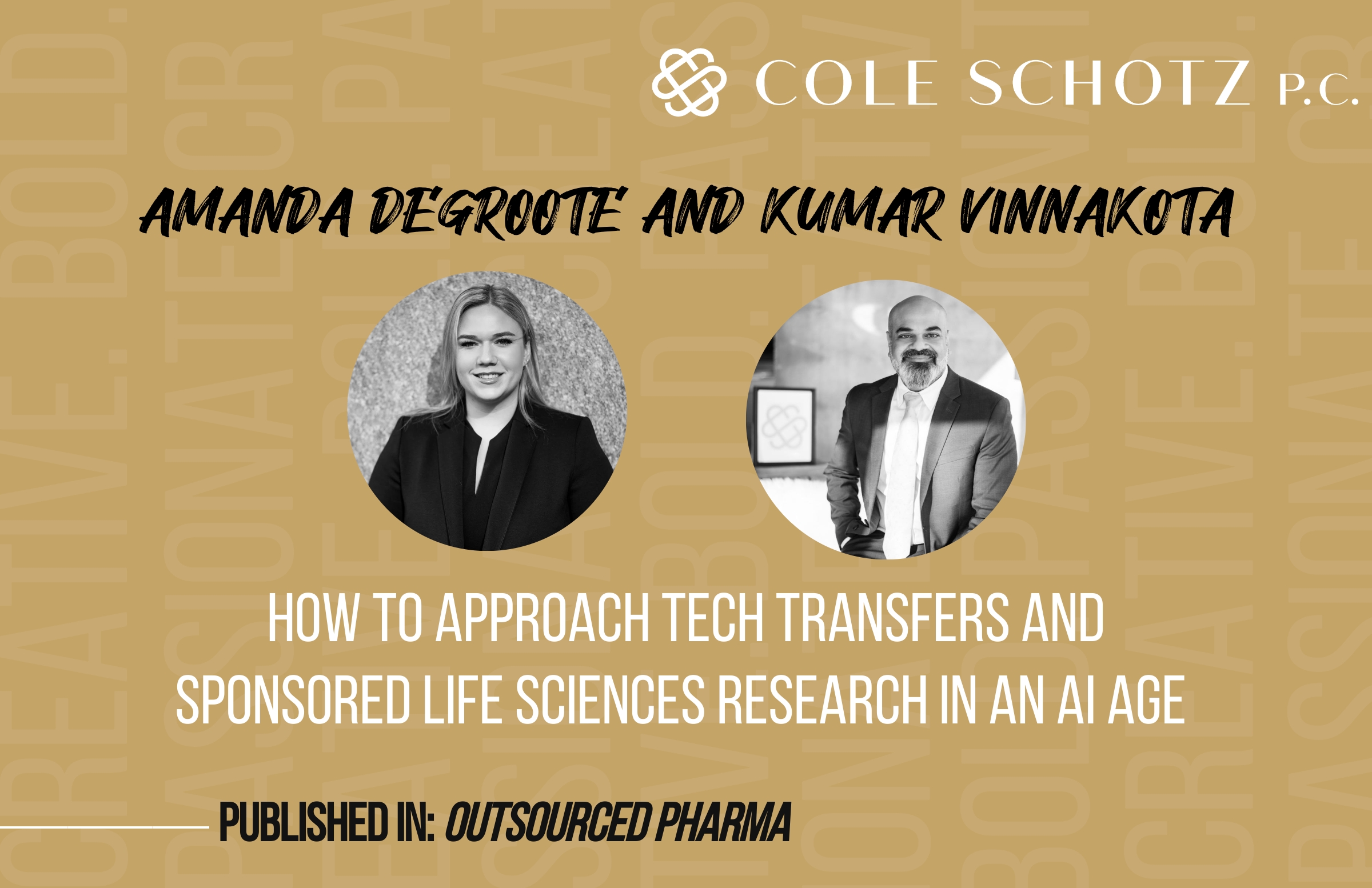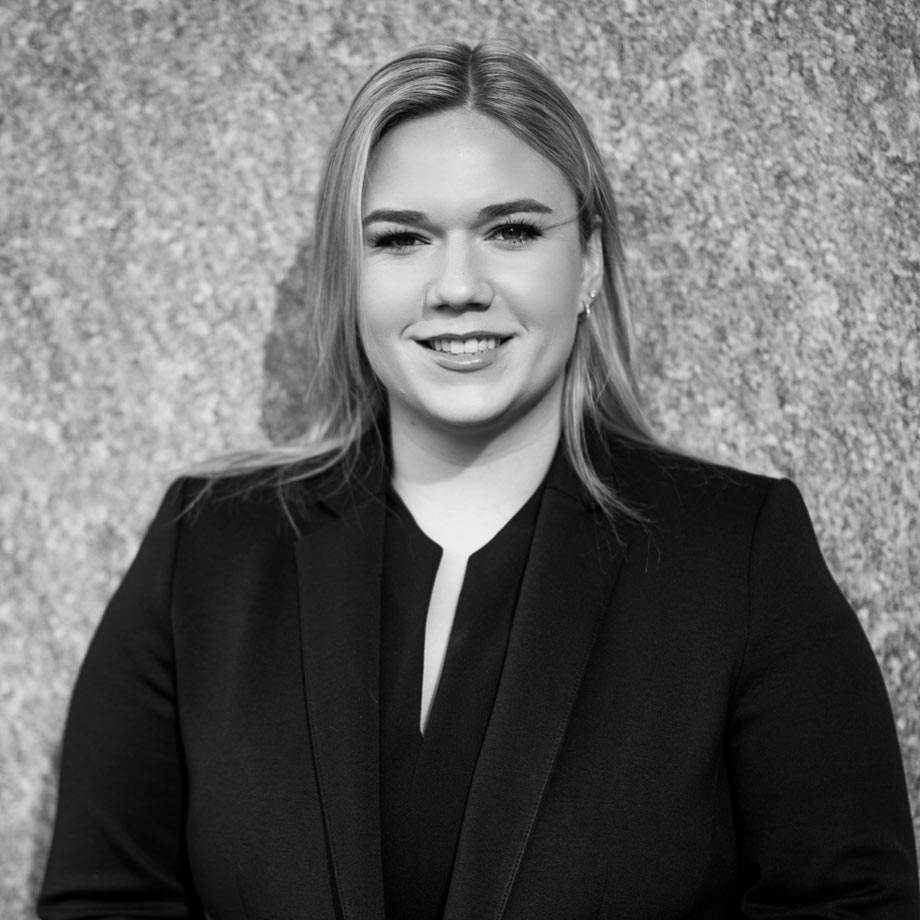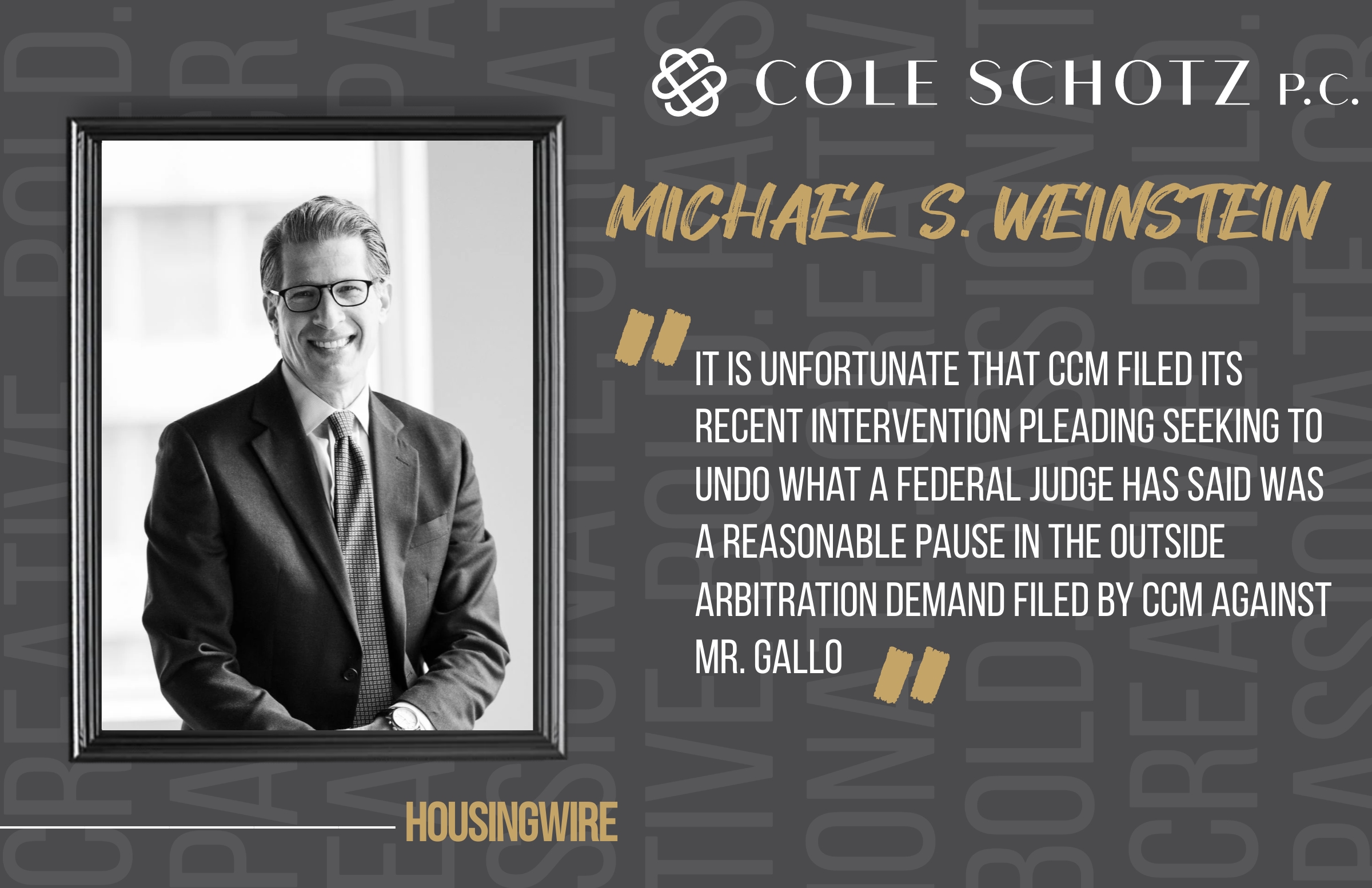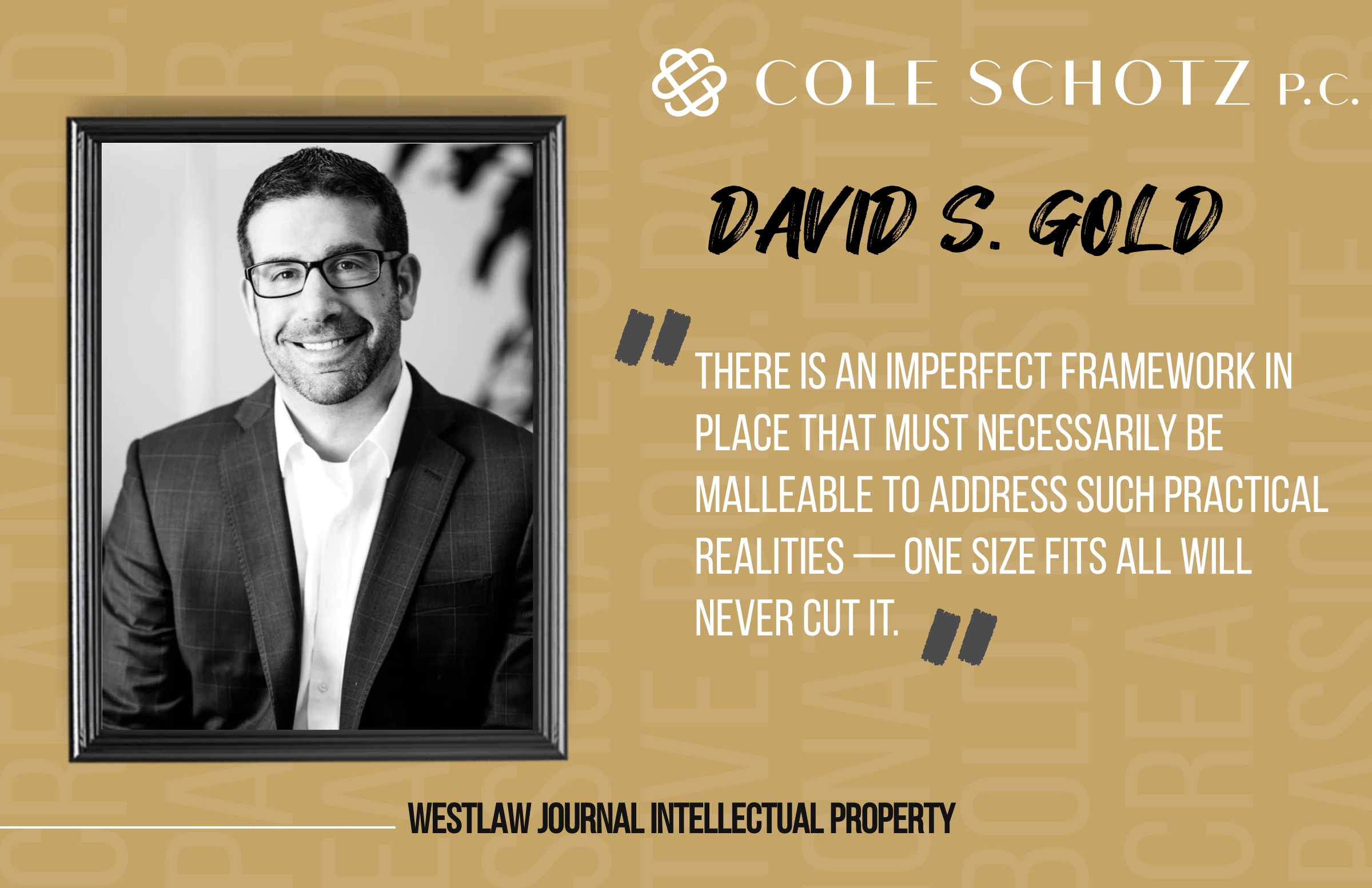How To Approach Tech Transfers And Sponsored Life Sciences Research In An AI Age

Amanda DeGroote & Kumar Vinnakota authored an article that was published in Outsourced Pharma.
The use of artificial intelligence in patent applications and related inventions is a rapidly evolving landscape. While artificial intelligence is not a new concept, it is gaining traction in many fields, including academia and technology development — and in the life sciences arena. This puts companies desiring to execute technology transfers or sponsored research in a challenging position. These technology partnerships allow for the transfer of intellectual property, innovations, ideas, knowledge, and commercialization between the entities at a much more rapid pace than individual research and development. This often occurs between private companies looking to commercialize intellectual property and the entities that create such intellectual property, such as universities, innovators, and research entities.
Artificial intelligence (AI) has created new considerations and concerns when executing these transfers and collaborations. Not only do companies need to understand complex contract law, but now, they also require an understanding of the current case law on patent applications with claims conceived through artificial intelligence. This article will provide a brief overview of the standards for patenting inventions conceived with the assistance of artificial intelligence, as well as provide tips on creating technology transfer or sponsored research agreements that address the concerns of artificial intelligence use while protecting the parties to the agreement.
The Patentability Of AI Conceived Inventions
As the United States Patent and Trademark Office (USPTO) has held for decades, only a “natural person” may be an inventor in a patent application.1,2 While understanding that inventions conceived in their entirety through AI could not be patented, the question remained, could artificial intelligence be utilized in the conception of inventions and. if yes, how much AI could be utilized in conceiving an invention and still remain patentable?
The USPTO attempted to provide clarity with their release of inventorship guidance for inventors utilizing AI in their patented materials.3 This guidance made it clear that “the use of an AI system by a natural person(s) does not preclude a natural person(s) from qualifying as an inventor (or joint inventors) if the natural person(s) significantly contributed to the claimed invention.” (emphasis added). This requirement is in addition to all other requirements for patentability of the claims (i.e., subject matter eligible, novel, non-obvious, and applicable). Additionally, any listed inventors must still meet the requirements that have been required for all inventors for decades, mainly that they “(1) contribute in some significant manner to the conception or reduction to practice of the invention, (2) make a contribution to the claimed invention that is not insignificant in quality, when that contribution is measured against the dimension of the full invention, and (3) do more than merely explain to the real inventors well-known concepts and/or the current state of the art.”4 In cases where only one inventor is listed, artificial intelligence may still have a significant role; however, the single inventor would be required to significantly contribute to all of the claims. The USPTO noted, “[i]n the event of a single person using an AI system to create an invention, that single person must make a significant contribution to every claim in the patent or patent application.” That is not to say that AI cannot contribute significantly to the potential patent claims. The guidance from the USPTO also notes that AI can make a significant contribution to the proposed patented material, including a contribution that would typically allow AI to be listed as an inventor if it were a natural person.
To read the full article, please click here.
As the law continues to evolve on these matters, please note that this article is current as of date and time of publication and may not reflect subsequent developments. The content and interpretation of the issues addressed herein is subject to change. Cole Schotz P.C. disclaims any and all liability with respect to actions taken or not taken based on any or all of the contents of this publication to the fullest extent permitted by law. This is for general informational purposes and does not constitute legal advice or create an attorney-client relationship. Do not act or refrain from acting upon the information contained in this publication without obtaining legal, financial and tax advice. For further information, please do not hesitate to reach out to your firm contact or to any of the attorneys listed in this publication. No aspect of this advertisement has been approved by the highest court in any state.
Join Our Mailing List
Stay up to date with the latest insights, events, and more






